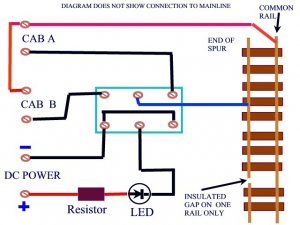Relying on my rudimentary knowledge of electronics and electricity....
An LED is a Light Emitting Diode, as such, it is number one a diode. A diode is nothing more than a directional switch. It allows current to flow in one direction but not the other. The LED is simply a special type of diode that emits light when it is biased, or polarized in the proper direction.
Now, a basic electric circuit requires a minimum of three things. A source, a load, and conductors to connect them. The source supplies the electric current, the conductors carry the current to and from the laod, and the load limits the amount of current flowing.
Sources can be batteries, generators, power packs, etc. Loads can be light bulbs, motors, heating elements, etc.
A fourth element can be added into the circuit, that is something to turn the load on and off, namely a switch.
So, we can have the source, a switch, a load, and the wires hooking them together.
Now, diodes happen to fall into the "switch" category because they do not significantly limit the amount of current flow like a load does. Even though an LED emits light, it still doesn't act like a normal light bulb in limiting the current. The LED is not considered as a laod. It is a switching device. Adding the resistor to the circuit is simply a load to limit the amount of current through the diode.
An properly biased LED connected across a voltage source without a load will be a short circuit and will probably burn out the LED due to high current flow.
LEDs have an inherent voltage rating depending on the type of material it is made from. This voltage rating is very low, like .3 or .6 volts or so. If they made a 12 volt LED, it would have to have a built in resistor. I don't think any manufacturer does this, but they could.


